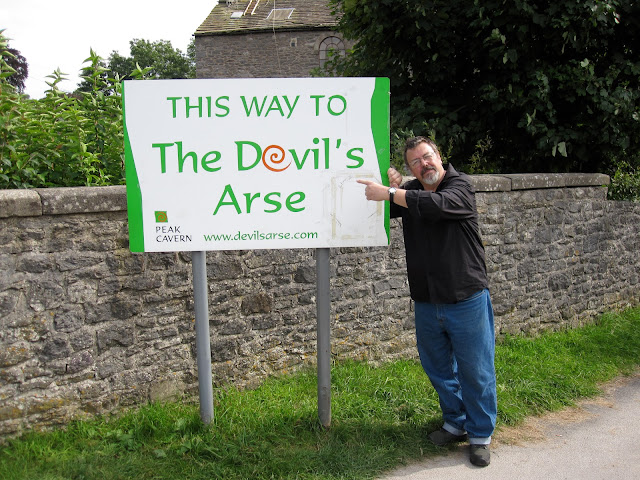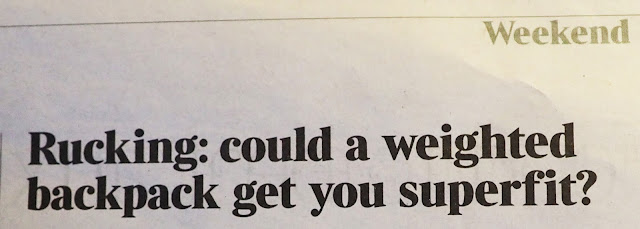Wednesday, February 21, 2024
ROAMING WITH NICHOLSON
Tuesday, February 13, 2024
JUMPING JELLICOES
If you grew up in Sheffield, as I did, there’s a good chance that many of your formative walking experiences took place in the Peak District. I was going to say it’s ‘just down the road’ from Sheffield, but in fact parts of Sheffield are now actually in the Peak District.
Much of my own walking, often with my dad though sometimes with others, centred around Castleton which is at the head of the Hope Valley – undulating peaks and tors, some of them exhaustingly steep, and pierced by various caverns. There was a local expression, at least in our house, ‘We live in hope but we’ll die in Castleton.’
 |
| PHOTO BY JOHN FINNEY PHOTOGRAPHY |
And at some point as we looked across the Hope Valley we’d see a white industrial conglomeration in the distance. It’s what used to be called The Hope Valley Cement Works, now Breedon Hope Cement Works.
Most observers would think it’s a blot on the landscape, but looking back I can’t believe how unsurprising it seemed. Perhaps this was because wherever you walked in Sheffield you were bound to see industrial sites, mostly concerned with the steel and cutlery industries, so in one sense it was just more of the same. But I’m still surprised by how accepting everybody seemed to be. It was just part of the landscape. I understand there are now two public footpaths that go through the site but if they were there in my day, I certainly wasn’t aware of them.
Only recently did I decide to look into the history a little. The Hope Cement Works opened at 1929, and was extended in 1935-8, against some resistance, not enough to halt the plans but enough for the owners to bring in Geoffrey Jellicoe, architect, landscape architect, town planner and garden designer, and by many accounts one of the great garden theorists, to create some sympathetic landscaping, using waste products from the mining operation, to hide what were essentially two big quarries. This wasn’t until 1942 when – for Pete’s sake – there was a war on, but Jellicoe produced a plan of intent for future quarrying, which held up at least until the 1980s. Jellicoe was born in 1900 lived to be 95
Now, Geoffrey Jellicoe is some way from being an open book to me, though I knew the name, and a little further research revealed thatI’d done more walking in Jellicoe’s footsteps than I’d imagined. For instance, I now know that when I walked around the pedestrianized center of Gloucester I was treading the ‘Via Sacre,’ part of the Jellicoe’s redevelopment plan for the city centre.
I’ve been in Fitzroy Square in London which was pedestrianised in the 1970s, as part of a Jellicoe scheme. I know I’ve been tothe RHS garden at Wisley where Jellicoe designed the Canal Garden, though I can’t say I remember it. And I’ve always been an admirer of the Ben Nicholson (no relation) wall in the Jellicoe-designed garden at Sutton Place, but I’ve only ever seen pictures.
And then, while looking for something quite else on a map of London I spotted something called Jellicoe Gardens, north of Kings Cross and St Pancras stations.
Now, the Jellicoe Gardens weren’t designed by Jellicoe but by Tom Stuart-Smith Ltd who were, and I’ll quote, ‘commissioned by Argent to work with them and the Aga Khan Development Network to design a garden inspired by the early Persian garden traditions, where sunlight, shade and water are balanced to create a place of calm, comfort and quiet reflection.’ A visit seemed to be in order.
That bit of territory around Jellicoe Gardens is now all linked open squares and fresh out of the box architecture, and nearby is Lewis Cubitt Park which seemed a bleak and desolate place on the day of my visit, though you can just about see one or two people walking there.
And as for Jellicoe Gardens themselves, they seemed to be, let’s say, minimalist. I saw exactly one person there, sitting on a bench looking forlorn.
This may be only to say that my visit was in mid-February and not much was growing and thriving as yet, but the place undeniably has good bones. And I really did like the pergola, if that’s the right word, through which you see the zesty modern architecture all around it. A second visit will surely be called for.
To quote Tom Stuart-Smith Ltd again, ‘Inspiration has been taken primarily from the great garden Bagh-e Fin, a traditional Persian garden located in Kashan, Iran. It is on a much larger scale, but the plan is quite similar.’ I can’t say how many visitors to the Jellicoe Gardens know anything about Geoffrey Jellicoe or about Persian Gardens, though since they’re adjacent to the Aga Khan Centre perhaps they may be more familiar with the latter than the former.
On a final not-quite-Jellicoe note, and returning obliquely to thoughts of the Hope Valley, I’ve observed that cement works are curious beasts wherever they are. When I lived in Los Angeles, and I sometimes walked along La Brea Avenue and there amongst the rather fashionable shops and restaurants was another cement works – in its way even more surprising than the one in Hope Valley. This was the CEMEX Hollywood Concrete Plant, which had been in business for over 60 years. It was a magnificent monster of a place covering one and a half acres, although when I mentioned it to Angelenos, most of them had no idea what I was talking about.
In fact I gather there are now plans to build a huge apartment block on the site. I’m not sure whether or not that’s a pity.
Thursday, February 1, 2024
SHANDY WALKING
This is rather good, I think, from Laurence Sterne’s A Sentimental Journey (1768):
‘I was walking down that which leads from the Carousal to the Palais Royal, and observing a little boy in some distress at the side of the gutter which ran down the middle of it, I took hold of his hand and help’d him over. Upon turning up his face to look at him after, I perceived he was about forty.—Never mind, said I, some good body will do as much for me when I am ninety.’
Well, A Sentimental Journey is essentially a novel, so the narrator is not exactly the author, but crossing the road when he was 90 was not a problem Sterne ever had. He died some months after A Sentimental Journey was published, aged 54.
And then, there was a piece in The London Review of Books, by Thomas Keymer, about the difficulty of pinning down the meaning of satire, and about ‘getting the wrong end of the stick.’ He writes:‘The cleverest inheritor of the phenomenon was Laurence Sterne, whose Tristram Shandy (1759-67) intersperses its narrative with explicit rebukes to imagined readers … The work was there to be grasped or debated as the reader wished, and when one of them sent Sterne a walking stick as a gift, it was, Sterne replied, ‘in no sense more Shandaic than in that of its having more handles than one’.
I must say I’d never seen a walking stick with more than one handle, but I find they do exist, like this:
But that’s not the same as grasping the wrong end. In most cases, with most walking sticks, there’s surely only one end you’d really want to grasp.
Monday, January 29, 2024
THE DANGERS OF WALKING – ONE OF A VERY LONG SERIES
Here’s the kind of thing you don’t read every day. In fact I read it in the Evening Standard on January 12thand have been waiting to hear further developments, but as far as I can tell there haven’t been any.
There in the paper, along with the above picture, was the headline ‘Crumbling Justice’ and the sub-headline ‘Pedestrian hurt after old Bailey Masonry Crashes into the Street Below.’
From this you and I would imagine a someone was walking down the street, and a lump of stone fell off the building from a great height and hit the walker below, But then you read the article (by Tristan Kirk, who I think also took the pictures), and it reads, ‘A member of the public was hospitalised after masonry over the “decaying” historic entrance to the Old Bailey crumbled and crashed into the street below.
‘No one was hurt when the stone fell from the building, but a pedestrian was injured after tumbling over debris on the pavement before the area had been cordoned off.’
Am I wrong to be disappointed by this? Walking along and being hit by an unidentified falling object has a lot of drama, maybe even cosmic drama, this kind of thing:
But tripping over a lump of stone that’s lying on the ground, really lacks grandeur. The fallen piece doesn’t even look to have been very big. The little white bit on the statue in the picture below is where it fell from.
Interestingly it seems to me, the pedestrian is not named in the news item. I wonder if the journalist was sparing his or her blushes. I don’t mean to mock this or any other pedestrian but falling over in the street and ending up in hospital is pretty hopeless and humiliating. I know because I’ve done it. And there wasn’t even a lump of masonry to trip over.
Monday, January 22, 2024
KEEP ON RUCKING? NO, NO JUST DON'T EVEN START.
You and I, of course, are familiar with Betteridge’s Law of Headlines which states, ‘Any headline that ends in a question mark can be answered by the word no.’ But not everybody is so familiar. And a little while ago in the Times there was this:
Rucking, it turns out (and maybe everybody in the world except me knew this already), consists of walking with a load of stuff in your rucksack. It can be metal plates, a few bricks or I suppose a couple of bottles of gin. According to the article, by Bridget Harrison, rucking is ‘being touted as the big fitness trend for 2024.’ Well, not in this house it isn't, young lady.
There are many, many ways of spoiling a walk and this seems very high on the list, though still better than golf, admittedly.
Here are some lads enjoying the benefits.


















